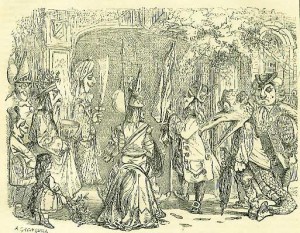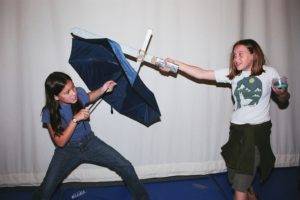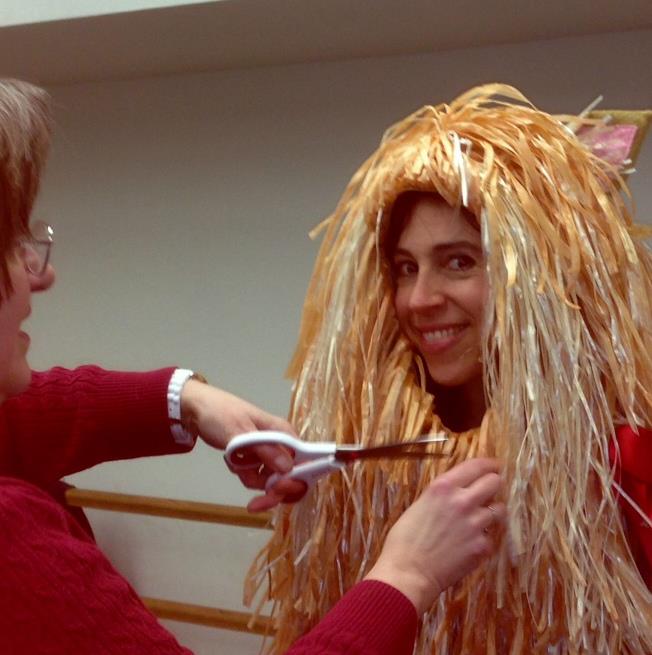Got an event? Grab your friends, some archetypal and silly costumes, and do some mumming!
WHAT IS MUMMING?
Mumming arises out of the same tradition as sword dances, and ethnohistorians believe they grew out of ancient agrarian societies, with a ritualized sacrifice to ensure the renewed fertility of the land and the people ….the battle between the old and new year, between winter and spring, between the darkness and the light. In the past 200 hundred years and in modern times, a group of Mummers might perform for members of a household, people on the street, people at an event (especially things like a wedding), or a group of families gathered together in celebration most commonly for/on the Twelfth Day of Christmas.
Typically, an event with Mummers also includes singing, dancing (group dancing, folk dancing and with Morris Dancers), and relevant storytelling, either by elders or recognized storytellers. The Mummers themselves might be working from an ancient bit of script, a modern version of a medieval script, or a structured improvisation with stock characters pertinent to the event.
dancing and with Morris Dancers), and relevant storytelling, either by elders or recognized storytellers. The Mummers themselves might be working from an ancient bit of script, a modern version of a medieval script, or a structured improvisation with stock characters pertinent to the event.
HOW DO I BEGIN?
A script or clearly structured improvisational outline!
Most ‘scripts’ have –as Wikipedia will tell you– a Doctor, George (Prince, Sir, King, Knight, whatever), the Turkey/Turkish Knight, and often a clown and/or Father Christmas to work the crowd, drive the (limited) narrative, and provide local topical commentary and audience interaction. Someone is killed and brought back to life by the Doctor.
Similarly, an event-specific ‘script should include stock, archetypal characters from that event (bride and bridegroom, and a weeping mother for a wedding, camp leaders, counselors, sports leaders, cooks, et cetera for a camp Closing Ceremonies event) and:
* doctor or person who makes the intellectual decisions (priest, principal, nurse, acountant)
* knight or persona mostly likely to take up silly defending item (camp leader with a boat paddle? Farmer with a hoe?)
* Pretty lady (played by a guy)
* manly man (played by a lady)
* step/sword/folk/Morris dancers
Your script should be very very simple, with a character-specific problem to solve (no priest, someone killed in a ‘battle’, the MC has gone mute), lots of comic idiocy (and the higher the social ranking of the character, the more ridiculous their actions should be and the characters on the low end of the social ladder are the smartest ones), and something mysterious and wonderful that happens as part of the solution that isn’t really explained (jumping the broom at weddings, raising of the dead in the Christmastime scripts, something magical and unexpected!).
gone mute), lots of comic idiocy (and the higher the social ranking of the character, the more ridiculous their actions should be and the characters on the low end of the social ladder are the smartest ones), and something mysterious and wonderful that happens as part of the solution that isn’t really explained (jumping the broom at weddings, raising of the dead in the Christmastime scripts, something magical and unexpected!).
WHAT NEXT?
Practice!
Even if it is improvisational, you should practice so people have a chance to explore their characters, develop exaggerated silly walks and swaggers, discover hilarious moments and routines, and learn what the pitfalls are going to be. It will also help you practice building suspense, keeping the energy going, comic timing, and not have any one character or section go on too long!
COSTUMES?
Rags, torn strips of newspaper taped or stitched on so they hang down like straw, twigs and leaves, silly, ill-fitting, mismatched or outrageous clothes … whatever is to hand will work.
ANY FINAL ADVICE?
Yes.
 Remember to really include the audience! Ask questions, tell jokes, get them to help the magic moment, blame someone for farting, goofily accuse an audience member of doing something bad that you yourself did behind another character’s back.
Remember to really include the audience! Ask questions, tell jokes, get them to help the magic moment, blame someone for farting, goofily accuse an audience member of doing something bad that you yourself did behind another character’s back.
And most importantly, HAVE FUN. This form, especially in modern times, is light and ridiculous. Think ‘mechanicals’ from A Midsummer Night’s Dream or commedia dell’arte shows, then add something sweet and sublime (which both A Midsummer Night’s Dream and commedia dell’arte have as well)!



